Specialist advice on the care of alyssum and its planting in open ground
An excellent solution for decorating a flower bed would be a plant like alissum. Growing this flower from the seeds will not be difficult even for novice gardeners. In the open field, it will not become the most important "star" in the garden, but fragile and delicate flowers will perfectly emphasize the brightness of other plants. The soft fluffy carpet of its buds is often used by landscape designers to decorate parks and squares. The combination of alyssum with various varieties of petunias and tulips creates the effect of a flower waterfall, which smells throughout the whole area with the wonderful aroma of cut grasses and honey.
So graceful and varied
Gardeners appreciate alissum (beetroot) for its easy care, the ability to grow on stones, between slabs. Fence owners fill the joints between the constituent elements with soil and plant seeds. In just a couple of months, the fence is decorated with many flowing flower cascades. Lovers of creating compositions on the balcony often use alyssum as a border for other plants. Here you need to take into account the nuance - flowerpots can attract many bees. This property is used by gardeners on their plots to pollinate various crops.
Advice
Sometimes gardeners have a problem - flower beds, made with all their hearts, begin to thin out. Plants with early budding periods fade. The beetle planting comes to the rescue. The seedlings will quickly grow leaves and young shoots that will cover the bald spots.
There is a sea or mountain alissum, a perennial plant or an annual. In our country, perennials prefer not to plant, because they have an average frost resistance and even good care does not guarantee survival in winter in the open field. This variety can be grown as an annual. Marine species of beetroot attract attention with highly branched branches with dark green leaves, and mountain alissum is more compact and elegant. The height of an adult bush varies from 15 to 20 cm, and the width reaches half a meter.
The color palette of the opened buds is diverse:
- delicate creamy white;
- rich pink, raspberry;
- lily, dark purple;
- yellow with an amber tint.
The types and varieties of alissum (and there are more than a hundred) have not only external differences, but differ in aromas. Experts distinguish them by the specific notes of the constituent components. Despite the many shapes and colors, plant care is the same, which is important to consider when drawing up flower beds.
The place for these miniature bushes should be the most illuminated. Planting a plant in a dark place will lead to stretching of the shoots and poor flowering. Alyssum is not picky about the soil - it prefers poor soils with neutral PH values. This allows the water not to linger, but to maintain the necessary moisture in the earthen coma.
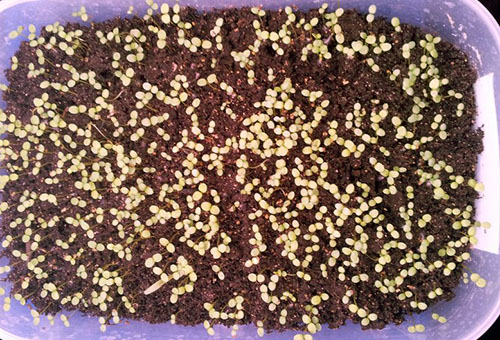
Correct cultivation of beetroot
Alyssum is considered a plant that is undemanding to weather conditions, so planting in flower beds and further care is carried out in early spring. The soil is pre-dug up, if it is dense, then a small amount of river sand is introduced. Experts advise to moisten the soil before planting, but watering is also possible after work.
There are only three cultivation methods.
- Planting seeds in the beds.
Parallel grooves are drawn on the ground, and then small seeds are sparsely scattered. With the bottom of a plastic cup, they are easily tamped in the ground, without sprinkling them with anything. After a week, the sprouts that appear are thinned out (distance -10-15 cm) and a complex fertilizer is applied. The initial dose is taken half as much as indicated in the instructions.
- Pre-germination in seedling boxes.
When gardeners want to achieve early flowering or budding in cycles, they start planting seeds in late February. Without deepening, they are rarely poured over the surface and covered with glass. Grown at a temperature of 18-20 ° C, not forgetting to arrange daily hourly airing for the sprouts. After the third strong leaf has broken through on the seedlings, they are dived into the pots and further care is taken.
- Propagation by cuttings.
In an adult plant, cuttings (8 cm) are cut from the shoots, dried and sprinkled with a root formation stimulator. The flower is placed in a greenhouse or immediately on a flower bed.
Advice
Experienced gardeners prefer to grow alyssum from seeds. You can purchase various varieties and types of plants, combine them in flower beds, taking into account the growth in a certain color scheme.
Cuttings are rarely used. This is usually practiced to preserve the unique features of the original sample. When strong young plants have appeared on the beds, the ground on the surface is loosened and mulched. You can use freshly cut grass as mulch.
What can you not do without?
You need to start caring for alyssum outdoors in mid-spring with pruning. Long and dry shoots should be shortened by at least a quarter - the plant will begin to grow many new ones, which will make its shape compact and lush. When the alyssum has faded, the pruning is repeated, removing the tops of the shoots along with the peduncles. Thus, experienced gardeners achieve repeated flowering, sometimes even more abundant than the first. Despite the unpretentiousness of the beetroot, it needs feeding, especially when the buds are laid. The number of dressings depends on the species.
- For perennial alissums, a couple of dressings are enough. The first is produced before flowering with complex fertilizers with a high nitrogen content. Fertilize again after pruning. Some experts recommend using only urea (0.5 tablespoons per ten liters of water).
- For lush flowering of annual bushes, 4-5 dressings per season are required. Every three weeks, the plants are fed with mineral fertilizers, which are applied at the root.
Watering the flower loves abundant, but without stagnation of excess moisture in an earthen coma. To determine when it is time to water, make a small hole in the soil. If the ground is already dry at a depth of 5 cm, then it's time for water treatments. Do not spray water on bushes, especially flowering ones - buds under the scorching sun can wrinkle and fall off.
Advice
Many growers like to plant alyssum not only for its decorative qualities, but also for its healing properties. A decoction of fresh leaves will help get rid of excess fluid in the body, and women use an aqueous infusion of flowers to whiten their skin. In case of a cold, the flowers are brewed in a thermos with boiling water and taken 50 ml three times a day.
Proper care is impossible without examining the appearance of the plant. Even if planting alyssum in the open field is extensive, once a week you need to inspect the bushes in search of the following pests:
- cruciferous flea;
- mealybug;
- caterpillars are different;
- turnip white.
Alyssum began to shed the buds, a cobweb appeared between the leaves, and the stems lost their turgor? Pests have appeared in the garden. Especially often flower beds are attacked by cruciferous flea beetles. Modern insecticides can easily deal with this problem with multiple treatments.
Flower growers love to plant these miniature bushes along garden paths. Some do not even harvest seeds in the fall, allowing them to fall freely to the ground. After overwintering, the seeds sprout in the most unexpected combinations. It remains only to carry out further care of the plants.
Today, many have alyssum in their flower beds.It is planted as a medicinal plant, as a border for flowers, in order to attract bees. And what a scent soars in the garden! It is definitely worth paying attention to this unusual bush.
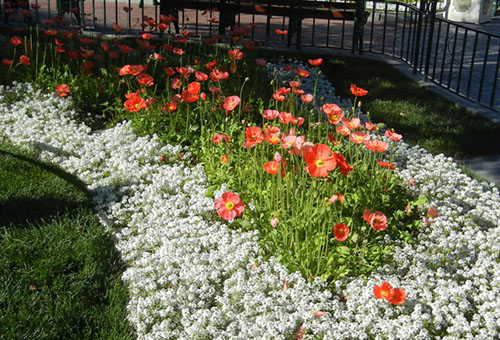
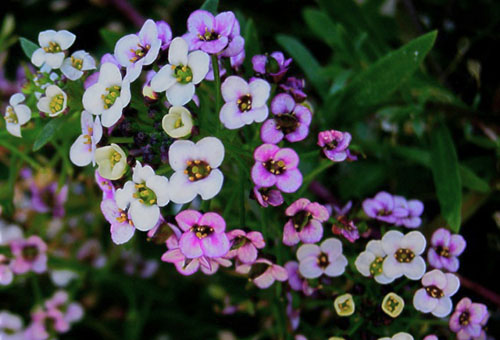
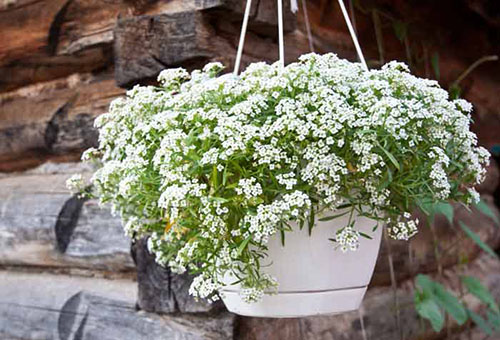
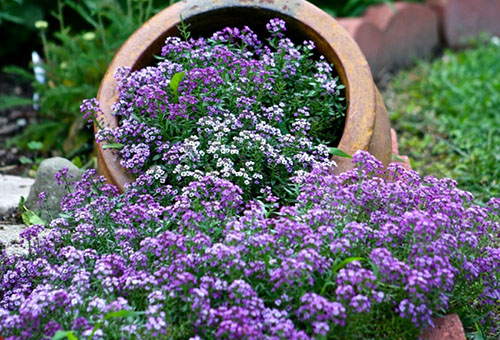



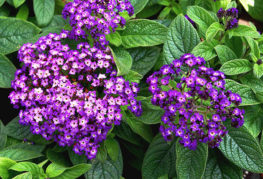

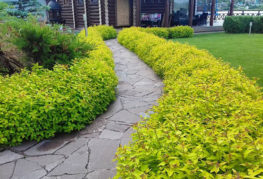
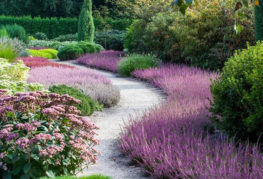
I sowed for seedlings, and then in small pots It was beautiful, but my mistake - the pots were too small, 1.5 liters. I had to water it often. But what a scent, and looked beautiful. I even cut it off and it grew even more beautiful. I live in Orenburg region. I planted it on seedlings again. But I will also try, as suggested in the article, straight into the ground. And inside, for example, or vice versa along the edges of the petunia. Thank you for the article.